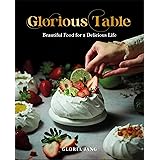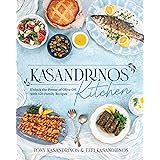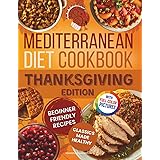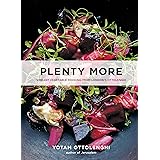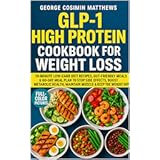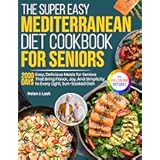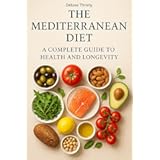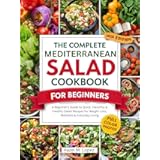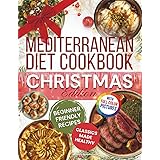One common misconception in the world of nutrition and weight management is the idea that to lose weight, you simply must eat less food. The video above powerfully illustrates why this isn’t quite right. When considering 150 calories, the physical volume can dramatically differ: picture a substantial bowl of watermelon, strawberries, or raspberries versus a small spoonful of peanut butter, a handful of almonds, or just a drizzle of olive oil. This striking comparison highlights a fundamental principle for sustainable weight loss: volume eating.
Contrary to the belief that strict restriction is the only path, volume eating teaches us how to feel satisfied and full while still achieving the essential calorie deficit required for effective weight loss. It’s about making smart food choices that provide ample bulk without excessive calories, turning your weight loss journey into a fulfilling experience rather than a constant battle against hunger.
Understanding Volume Eating: More Food, Fewer Calories
Volume eating is an approach to nutrition that focuses on consuming foods with a low energy density. This means selecting foods that offer a large physical volume or weight for a relatively small number of calories. Think of it like this: your stomach has stretch receptors that signal fullness to your brain. When you fill your stomach with voluminous, low-calorie foods, these receptors are activated, sending messages of satiety long before you’ve consumed a significant number of calories. This is the core strategy behind using volume to support your weight loss goals.
The beauty of this method lies in its simplicity and effectiveness. You get to eat generous portions, which can be incredibly psychologically satisfying, while naturally reducing your overall caloric intake. It’s a game-changer for anyone who struggles with hunger on a traditional diet.
The Science Behind Feeling Full: How Volume Eating Works
Our bodies are complex machines, and the sensation of fullness, or satiety, is influenced by several factors beyond just calorie count. Volume eating leverages these mechanisms:
- **Stomach Distension:** As mentioned, your stomach has stretch receptors. When it expands due to food and liquid, signals are sent to your brain, indicating you’ve eaten enough. Low-energy-dense foods, rich in water and fiber, physically take up more space, stretching the stomach and promoting satiety.
- **Nutrient Density:** Volume-eating foods are often packed with essential vitamins, minerals, and antioxidants. When your body receives adequate nutrients, it’s less likely to send “hunger” signals driven by a nutrient deficiency, further supporting healthy diet habits.
- **Fiber Content:** Fiber is a non-digestible carbohydrate found in plants. It adds bulk to food without adding calories, slows digestion, and helps regulate blood sugar levels. This prolonged digestion contributes to a sustained feeling of fullness, preventing rapid spikes and crashes in energy that can trigger cravings.
- **Water Content:** Many low-calorie, high-volume foods, such as fruits and vegetables, have a very high water content. Water contributes to the physical volume of food and helps you feel full without contributing calories.
Consider the analogy of filling a car’s fuel tank. You could put in a small amount of highly concentrated, expensive fuel that burns very quickly, leaving the tank looking almost empty. Or, you could fill it with a larger volume of a more efficient fuel that lasts longer and truly fills the tank. Volume eating is like choosing the efficient, high-volume fuel for your body’s tank.
Best Foods for Volume Eating and Weight Loss
To successfully implement a volume eating strategy, focusing on specific food categories is key. These foods are generally high in water and fiber and low in fat and added sugars, making them perfect for satisfying your appetite without overshooting your calorie goals.
Fruits and Vegetables: The Unsung Heroes
As the video above brilliantly demonstrates with watermelon, strawberries, and raspberries, fruits are fantastic for volume eating. Their high water content and natural sweetness make them satisfying snacks or additions to meals. Beyond berries, consider:
- **Leafy Greens:** Spinach, kale, lettuce, arugula. These are incredibly low in calories and can be consumed in massive quantities. A large salad with a lean protein can be very filling.
- **Cruciferous Vegetables:** Broccoli, cauliflower, Brussels sprouts. Rich in fiber and nutrients, they add bulk and satiety to any dish.
- **Other High-Volume Veggies:** Cucumbers, bell peppers, zucchini, tomatoes, mushrooms, celery. These can be sliced, diced, or spiralized to replace higher-calorie components in meals.
- **High-Water Fruits:** Apples, oranges, grapefruit, cantaloupe, honeydew melon.
Lean Proteins: Building Blocks for Satiety
Protein is crucial for satiety. It helps preserve muscle mass during weight loss and is known to be the most satiating macronutrient. Incorporating lean protein sources into your volume eating plan will keep you full for longer.
- Chicken breast (skinless)
- Turkey breast (skinless)
- Fish (cod, tilapia, tuna, salmon)
- Egg whites
- Greek yogurt (plain, non-fat)
- Cottage cheese (low-fat)
- Legumes (beans, lentils, chickpeas) – these also provide significant fiber!
Whole Grains and Legumes: Fiber-Packed Powerhouses
While often higher in calories than non-starchy vegetables, whole grains and legumes still offer excellent volume due to their high fiber and water absorption capabilities when cooked. They are superior to refined grains for satiety and overall health.
- Oatmeal (especially steel-cut or rolled oats)
- Quinoa
- Popcorn (air-popped, lightly seasoned)
- Lentils
- Black beans, kidney beans
Practical Tips for Incorporating Volume Eating into Your Diet
Making volume eating a consistent part of your routine doesn’t have to be complicated. Here are some actionable strategies to help you feel full and support your sustainable weight loss journey:
1. **Start Meals with Salad or Broth-Based Soup:** Kicking off your meal with a large serving of leafy greens or a light vegetable soup can fill your stomach with minimal calories, reducing the amount of higher-calorie food you’ll eat afterward.
2. **Bulk Up Your Favorites:** Love pasta? Mix in spiralized zucchini or a generous amount of chopped vegetables with your noodles. Enjoy stir-fries? Double the vegetables and slightly reduce the oil and higher-calorie proteins. This approach allows you to enjoy familiar flavors in a more volume-friendly way.
3. **Snack Smart:** Instead of reaching for a handful of chips (which are calorie-dense), opt for carrots and hummus, cucumber slices, an apple with a sprinkle of cinnamon, or a large bowl of air-popped popcorn. These options provide satisfying crunch and bulk.
4. **Hydrate Liberally:** Sometimes, thirst is mistaken for hunger. Drinking plenty of water throughout the day, and especially before meals, can contribute to feelings of fullness and overall well-being. Infused water with fruit and herbs can also add a pleasant flavor without calories.
5. **Master the Art of the "Mega-Meal":** Imagine a giant salad bowl packed with various greens, colorful vegetables, a lean protein source like grilled chicken or chickpeas, and a light vinaigrette. Or a massive vegetable and bean chili. These meals deliver immense satisfaction for a controlled calorie count.
6. **Be Mindful of Calorie-Dense Add-ons:** While the video rightly points out that almonds, peanut butter, and olive oil are calorie-dense, they are also healthy in moderation. The key is portion control. Use them sparingly as flavor enhancers, not as the main component. A small drizzle of olive oil, a tablespoon of nuts for crunch, or a smear of nut butter can be perfectly fine within a calorie deficit.
Embracing the principles of volume eating fundamentally shifts your perspective on food for weight loss. It moves away from deprivation and towards abundance, allowing you to enjoy delicious, satisfying meals while steadily progressing toward your health and weight goals. By choosing foods rich in water and fiber, you can truly eat more for fewer calories, keeping hunger at bay and making your journey both effective and enjoyable.


